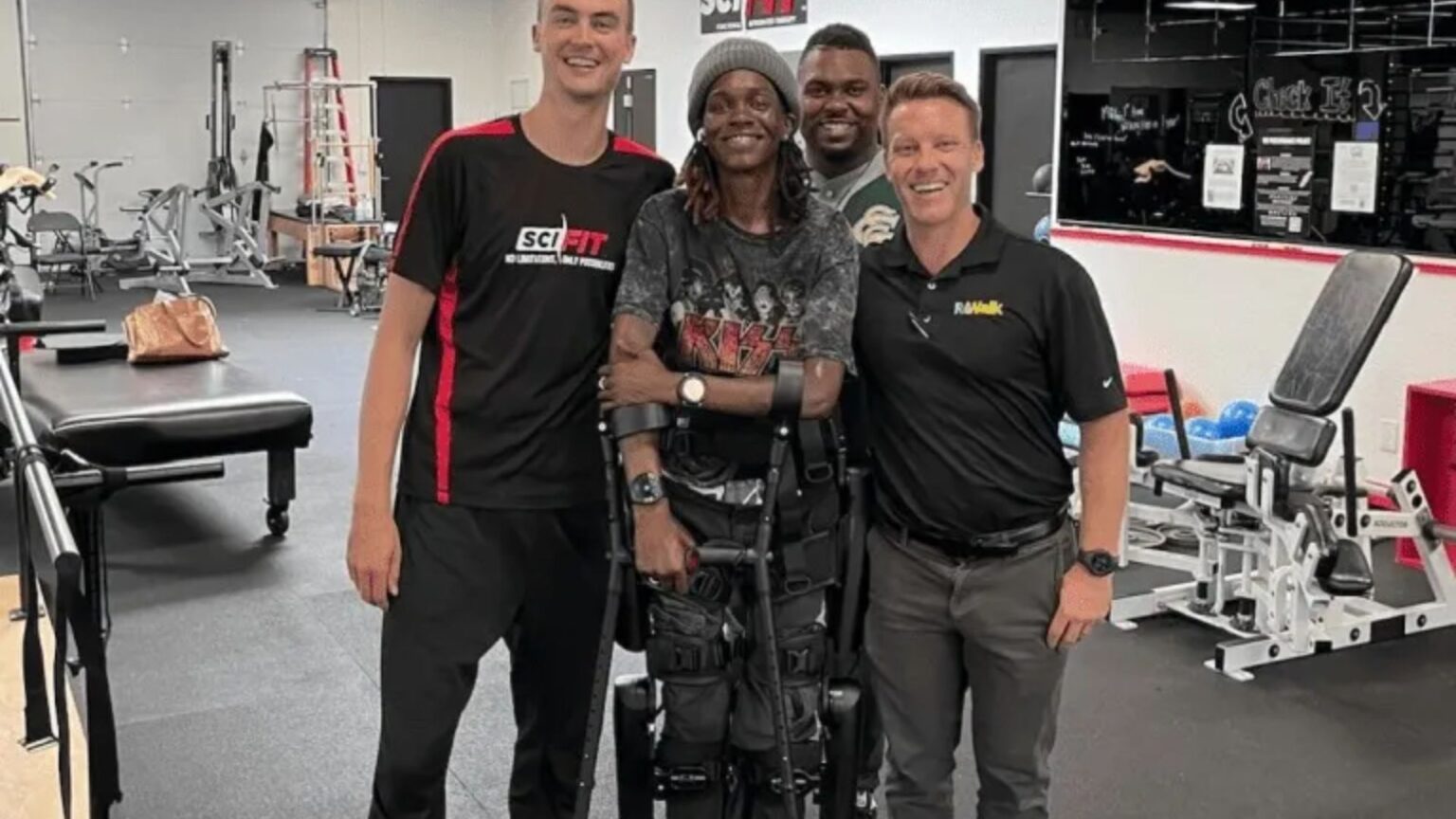Keontae Clark, a 26-year-old tennis player, has spent over a decade navigating the challenges that come after a spinal cord injury from a car accident. For 13 years, she relied on a wheelchair for mobility, each day a reminder of the limitations imposed by her T10 injury, which left her paralyzed from the waist down. Life in those years was not just about physical impairment; it was a complex journey of mental resilience, adaptation, and an unwavering pursuit of normalcy.
Recently, Keontae began using a $100,000 exoskeleton suit that allows her to walk again. While the advanced technology of this suit certainly draws attention and interest, what truly resonates in her journey is the profound discipline that mirrors the experiences of endurance athletes. The exoskeleton functions not just as a tool but as a means of rediscovering movement; however, it is through dedication and long-term commitment that Keontae has found herself once more able to walk, albeit with assistance.
During her training sessions over the past few months, Keontae has been implementing a methodical approach to relearning how to walk — a concept familiar to those who have put in the deep, grueling hours of endurance training. Similar to pacing a long run or adjusting technique during a multi-day race, she began this process unsure of her stability, facing the fear of failure that so many athletes experience when navigating the uncharted waters of recovery or a new training regimen. In her early attempts, she felt shaky, lacking the confidence to trust the technology beneath her. But just as endurance athletes know that strength comes not from immediate successes but through consistent effort, Keontae found that perseverance was key.
Each small improvement — whether the ability to take a step unaided or descend a curb — echoed the milestones athletes celebrate in their own long journeys. With every session, she built upon her experiences, allowing her mental resilience to fortify her physical capabilities. Just as we adapt our training plans based on performance and recovery, Keontae adapted her walking sessions, continually recalibrating her approach as she grew more confident and capable.
Keontae’s story speaks volumes about motivation in the face of obstacles. Her moments of doubt are reminiscent of the internal battles faced during exhausting races or challenging training blocks. In those tough instances, a deeper mental drive often surfaces — the reason why one runs, cycles, or swims in the first place. For Keontae, that might come from the feeling of standing upright after years of confinement. Yet this drive is not blind; it is rooted in the awareness of progress and the knowledge that setbacks do not define the journey.
Moreover, the community aspect of her experience cannot be overlooked. Endurance sports thrive on camaraderie; they are often fueled by shared experiences and support systems that allow individuals to push through pain and adversity. The presence of her trainers, holding the exoskeleton to provide stability while she walked, reflects the spirit of teamwork and encouragement that defines endurance activities. It showcases that no journey is undertaken alone, whether it’s on a competitive field, in training, or in overcoming significant life challenges.
Keontae’s progress with the exoskeleton suit also serves as a reminder of the importance of listening to one’s body, a fundamental principle that resonates with endurance athletes. Just as athletes learn the nuances of their strength and limits, Keontae has committed to understanding her body’s responses. She has embraced both her achievements and her uncertainties, realizing the value in patience as she reintegrates movement into her life.
For athletes accustomed to physical exertion, the insights from her experience might weave into their own fabric of endurance. It reinforces that success isn’t solely about acceleration toward an end goal, but rather, it’s found in the dedication to process, the grit to endure the unsteady beginnings, and the humility to recognize that adaptability is as crucial to growth as physical training itself.
As Keontae prepares for public milestones, such as carrying the Olympic torch, she embodies the very spirit of perseverance common to endurance athletes. It serves as a poignant reminder that greatness is often forged in the crucible of effort, where steadfastness ultimately leads to breakthrough moments, no matter the nature of the challenge being confronted.
For anyone engaged in an endurance endeavor, Keontae’s journey impart lessons about resilience: progress may emerge slowly, but it accumulates over time, crafted by consistent effort, commitment, and the willingness to adapt. The next time you lace up for a long session, remember the strength that stems not just from the triumphs, but from the act of pushing through uncertainty, just as Keontae does each time she steps back into her training.
